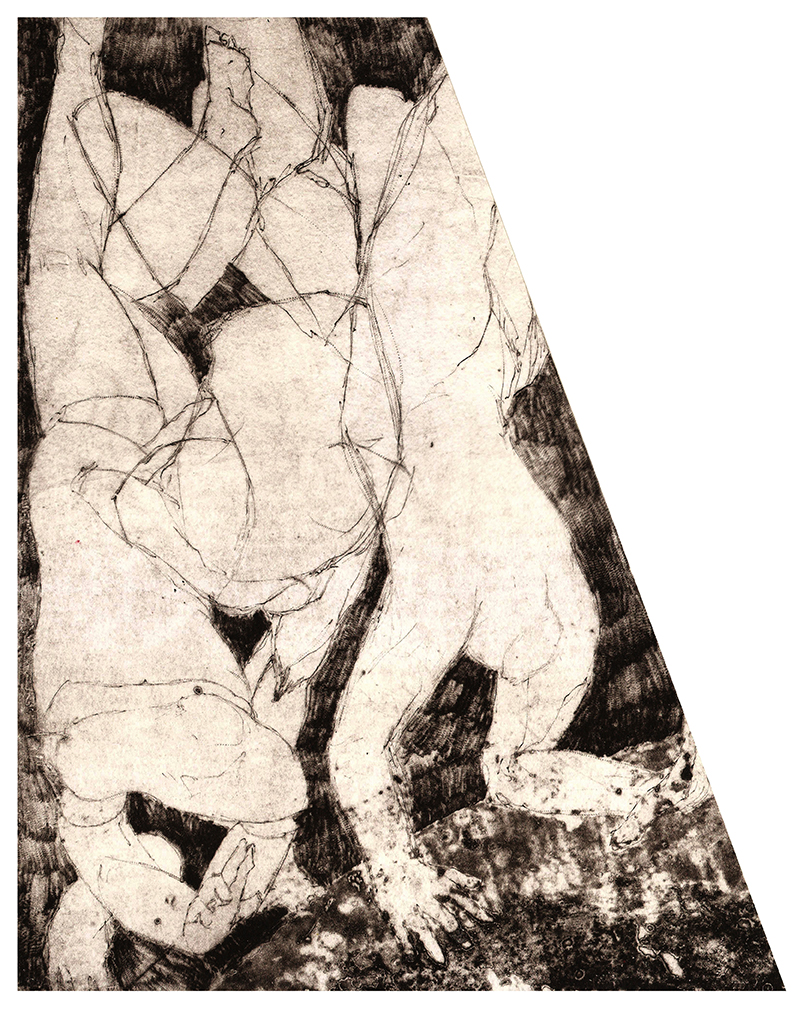Sobrevivir al límite
La primera vez que Noelia cantó delante de mí me atravesó el corazón. Sentí sus tripas en su boca, su forma salvaje de vivir y de sentir, su valentía de habitar el límite de las cosas, su fragilidad. Ese día comprendí que su obra es una cuestión de supervivencia.
Hacía ya varios años que Noelia se había
autodespedido para convertirse en Eloisse Louisse. Habíamos hablado,
discutido y llorado nuestros procesos creativos, nuestra manera tan
distinta pero tan parecida de sentir el arte y la vida.
Sin embargo, fue el día que la escuché cantar cuando entendí su necesidad; una necesidad de sobrevivirse a través y a pesar de la práctica artística.
Como una tirada de I-Ching, su hacer es un ritual de conexión con lo esencial, que unas veces sana y otras ahonda hasta lo más profundo en la herida. Un hacer que desgarra, atraviesa y transforma. Un hacer inevitable e imposible de contener, que canta sangrando como Chavela, como Morente, como la Lole.
Dibujar es su lengua materna. Frente al papel, se reúne consigo misma en una asamblea de voces y cuerpos para dialogar sobre lo pequeño; gritando, escupiendo y vomitando sobre lo absoluto y esencialmente humano. De esta manera, desviste su cuerpo órgano a órgano para que podamos encontrarnos dentro de ella.
Como diría Lacan, con su práctica ama dando lo que no tiene.
No lo hace desde el anhelo por la carencia ni desde el deseo de
poseerla, sino que su forma de amar es una búsqueda y encuentro con
aquello que no está; es de confrontación
y entendimiento; es de llevarse hasta ese lugar en el que el cuerpo es aplastado como un acto de amor.
La intensidad -tierna y violenta a partes iguales- con la que abraza su obra, es en sí misma un acto poético de generosidad y honestidad. Su temblor contagia al tuyo cuando entiendes que su poder reside en saberse vulnerable.
Transita el límite y por eso sobrevive.
Victoria Catalán Ascaso. Bilbao, febrero de 2020
Surviving on the edge
The first time I saw Noelia sing, it really pierced my heart. I could feel her guts in her mouth, the wildness in the way she lives and feels, her courage to inhabit the limits of things, her fragility. That day I understood that her work is a question of survival.
It had been several years since Noelia said goodbye to herself and became Eloisse Louisse. We had talked, argued and cried over our creative processes, our way of feeling art and life, so different and yet so similar. However, it was the day I heard her sing that I understood her need; a need, through and in spite of artistic practice, to survive.
Like an edition of l-Ching, what she does is a ritual of connection with the essential, which at times heals and at others digs deep down into the wound. What she does tears, pierces and transforms. It is inevitable and impossible to contain, she bleeds when she sings, like Chavela, Morente and the Lole.
Drawing is her mother tongue. In front of the paper, she meets herself in an assembly of voices and bodies to discuss what is small; screaming, spitting and vomiting forth about the absolute and essentially human. In this way, she undresses her body, organ by organ, so that we can meet inside her.
As Lacan would say, with what she does she loves by giving what she does not have. She does not do this from a yearning for what she lacks or from a desire to possess it, but her way of loving is rather a search and an encounter with what is not there; it is confrontation and understanding; it is taking herself to the place where the body is crushed as an act of love.
The intensity – tender and violent in equal parts – with which she embraces her work is in itself a poetic act of generosity and honesty. Her trembling is contagious when you understand that her power lies in knowing that she is vulnerable.
She crosses the line and that is why she survives.
Victoria Catalán Ascaso. Bilbao, February 2020.
